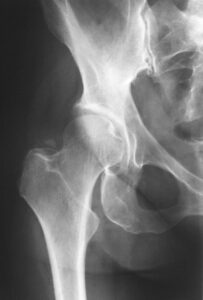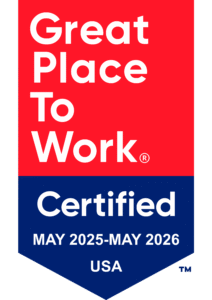Migraine & Headache Awareness Month
June is nationally recognized as Migraine and Headache Awareness month. More than 38 million people in the United States experience headaches and more than 2 million suffer from chronic migraines. Headache and migraine pain can range from temporary, mild discomfort to severe, crippling pain that lasts for several days. Because there are many different types and causes of headaches, it’s important to monitor your symptoms, learn how to manage your pain, and recognize when you should see a healthcare provider. ¹
What Causes Headaches?
There are dozens of causes of headaches. While most headaches can be treated at home and subside in a matter of hours, they can occasionally be the sign of a serious illness or underlying condition. Understanding the most common causes of headaches and the different symptoms that result is the first step in determining a treatment plan for your pain. ²
There are two main classifications of headache causes: primary and secondary headaches.
Primary Headaches
Primary headaches affect the pain-sensitive structures in your head—they are not caused by an underlying illness. Primary headaches occur when there are changes in the chemical activity in your brain, nerves or blood vessels in your skull, or muscles in your head, face, and neck. According to The Mayo Clinic, these changes can be triggered by the following lifestyle factors:
- Alcohol
- Certain foods, particularly processed foods that contain nitrates
- Lack of sleep or poor sleep quality
- Skipped meals
- Bad posture
- Stress
Some people are genetically predisposed to experience primary headaches more frequently. They can typically be treated by making lifestyle adjustments like getting better sleep, eating meals on a consistent schedule, avoiding alcohol, or correcting your posture. Identifying what triggers your headaches will also help you to prevent them in the future.
Secondary Headaches
A secondary headache is a headache that is a symptom of a disease, resulting in pain in your head. The Mayo Clinic lists possible causes of secondary headaches include:
- Blood clot
- Brain aneurysm
- Brain tumor
- Concussion
- COVID-19
- Dehydration
- Dental problems
- Glaucoma or other eye problems
- Hangover
- High blood pressure
- Influenza
- Meningitis
- Panic disorder
- Sinus or ear infection
- Stroke
The underlying causes of secondary headaches range in severity, so it’s important to not only monitor head pain, but also any other symptoms you may be experiencing. ³ According to the National Headache Foundation, if your headache is accompanied by any of the following new symptoms, seek medical attention:
- Confusion
- Diarrhea
- Dizziness
- Fever
- Loss of vision
- Numbness
- Pain in your ears, nose, throat, or eyes
- Shortness of breath
- Slurred speech
- Stiff neck
- Vomiting
- Weakness
Types of Headaches
In addition to cause, headaches are further classified by pain location, duration, and severity. These are the most common types of headaches:
- Tension Headache: Tension headaches are the most common type of headache, generally described as a dull, aching pain or feeling like a tight band around one’s head. The pain is mild to moderate and does not normally occur in a specific location of the head. There are typically no other symptoms associated with tension headaches. ⁴
- Cluster Headache: A cluster headache is one of the most painful types of headache. They are named for occurring in episodic “clusters” of several weeks or months. They usually appear quickly and without warning, with pain located in, behind, or around one eye. Cluster headaches are always one-sided and may be accompanied by tearing, swelling, or redness of the eye on the affected ⁵
- Sinus Headache: A sinus headache pain feels like pressure and is located around the eyes, cheeks, and forehead. Other symptoms may include a stuffy nose, worsening pain if you bend over or lie down, or an achy feeling in your upper teeth. A sinus headache is a common side effect of a sinus infection. ⁶
- Thunderclap Headache: Thunderclap headaches are named for striking suddenly like a clap of thunder. The pain is severe and peaks within one minute of onset, sometimes accompanied by nausea or vomiting. Thunderclap headaches are uncommon and usually a sign of a life-threatening condition or bleeding in the brain. Seek emergency medical attention if you experience a thunderclap headache. ⁷
- Migraine: A migraine is a type of severe head pain known for causing sensations of throbbing pain on one or both sides of the head. It is commonly accompanied by nausea and extreme sensitivity to light and sound. The frequency and duration of migraines varies from person to person, but it is reported that people who have migraines usually experience them chronically. Because of this, they are often classified separately from a regular headache. ²
Migraines vs Headaches: What’s the Difference?
Migraines differ from headaches in several ways. Other than the unique type of pain associated with migraines, they are also known for occurring regularly throughout an individual’s life. It is extremely uncommon for a migraine sufferer to experience only one migraine in his or her lifetime. The Mayo Clinic highlights a few factors that make individuals more susceptible to migraines, including:
- Family history: If you have a relative who gets migraines, your likelihood of developing migraines increases.
- Age: Migraines can begin at any age, but typically begin in adolescence. For most individuals, migraines peak in frequency and severity between ages 30 and 40, then gradually decrease.
- Gender: Women are three times more likely to experience migraines than men.
- Hormonal changes: For women, migraines often begin around the onset of menstruation and improve after menopause.
Migraines also last significantly longer than other types of headaches. The pain associated with a migraine can last for up to 72 hours if untreated and many migraines include symptoms a few days before and after head pain.
- Prodrome: Prodrome is the period of symptoms that occur before a migraine including constipation, mood changes, food cravings, neck stiffness, increased thirst and urination, and frequent yawning. Individuals may experience any combination of these symptoms before the onset of a migraine, or none of these at all. ²
- Post-drome: Post-drome is the feeling of fatigue or confusion that many migraine sufferers experience the day after head pain subsides. Some people report feelings of elation or brief flickers of pain. ²
Managing Headache and Migraine Pain
Fortunately, most headache and migraine pain can be managed at home without seeking medical attention. If you are experiencing a headache, depending on the severity of the pain, try the following to help provide relief. The Mayo Clinic recommends: ⁸
- Taking an over-the-counter painkiller like ibuprofen or acetaminophen.
- Relaxing in a dark, quiet room.
- Sleeping, if possible.
- Applying a hot or cold compress to your head or neck.
- Taking a warm bath or shower.
- Sipping caffeinated tea or coffee. Caffeine in small amounts has been shown to relieve migraine pain and enhance the pain-reducing effects of acetaminophen and aspirin.
When to See a Doctor
If you are unable to manage your headache at home, it may be necessary to seek medical attention. ³ Contact a doctor if you experience any of the following:
- Your headache is accompanied by unexpected symptoms or pain somewhere other than your head.
- Your pain is persistent or worsening.
- Your pain interferes with your ability to perform daily activities.
- You experience a thunderclap headache.
- Your headache was caused by coughing, sneezing, exercise, or sexual activity.
- Your headache began shortly after a head injury or other trauma.
- You take pain medication on a regular basis.
- The symptoms of your migraines change.
Headaches and migraines are extremely common and are generally not a cause for concern. However, in rare circumstances, they may be the symptom of an underlying condition that should be addressed by a medical professional. By understanding the types and characteristics of headaches, you can identify the best way to address your pain, manage your symptoms, and prevent headaches in the future.
Sources:
¹ https://www.flushinghospital.org/newsletter/june-is-national-migraine-and-headache-awareness-month/
² https://www.mayoclinic.org/symptoms/headache/basics/causes/sym-20050800
³ https://headaches.org/resources/when-to-see-a-healthcare-professional-2/
⁴ https://www.mayoclinic.org/diseases-conditions/tension-headache/symptoms-causes/syc-20353977
⁵ https://www.mayoclinic.org/diseases-conditions/cluster-headache/symptoms-causes/syc-20352080
⁶ https://www.mayoclinic.org/diseases-conditions/sinus-headaches/symptoms-causes/syc-20377580
⁷ https://www.mayoclinic.org/diseases-conditions/thunderclap-headaches/symptoms-causes/syc-20378361
⁸ https://www.mayoclinic.org/diseases-conditions/migraine-headache/in-depth/migraines/art-20047242


 About Shima:
About Shima:
